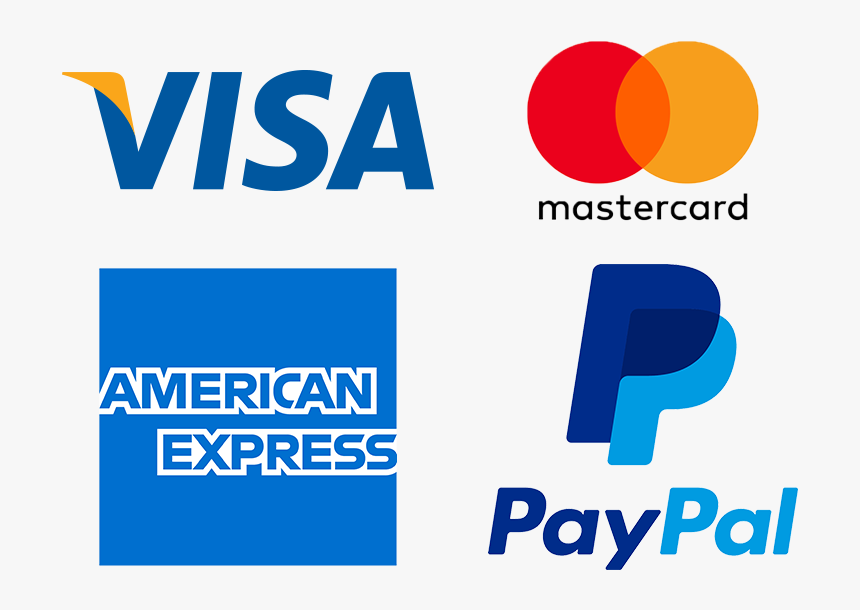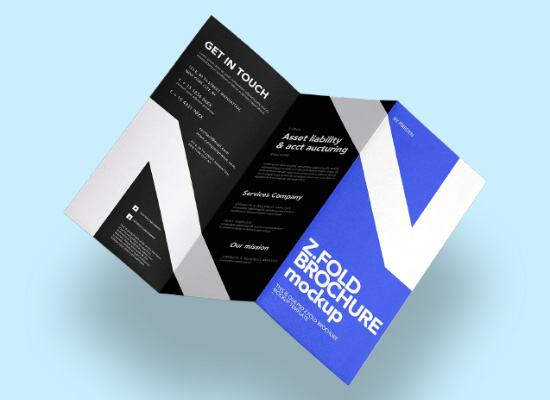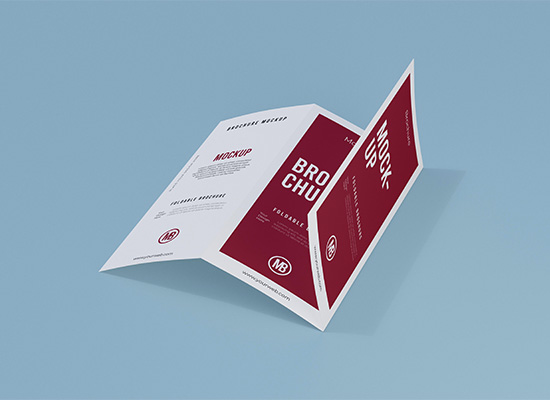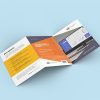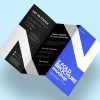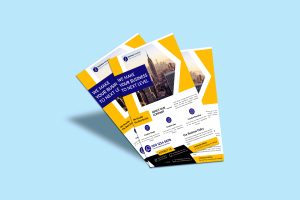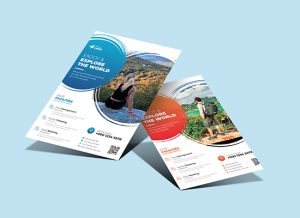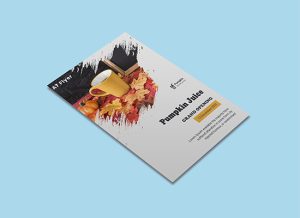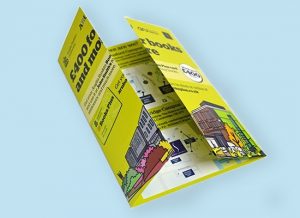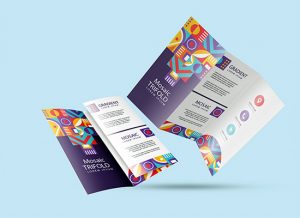Short Description
Z-Fold Flyers & Leaflets
Please select artwork files:

Additional Information
Z-Fold Flyers & Leaflets offer a zigzag fold with six panels, creating a compact, expandable format perfect for detailed and organized content.
Z-Fold Flyers & Leaflets: A Comprehensive Overview
Introduction
Z-fold flyers and leaflets are a popular and dynamic marketing tool, recognized for their unique folding structure and versatility. Also known as accordion fold leaflets, Z-fold flyers are named after the distinctive “Z” shape they form when folded. This design consists of three panels folded in alternating directions, creating a seamless and interactive experience for the reader as they unfold the flyer. The Z-fold format is ideal for conveying step-by-step information or guiding readers through a progression of ideas in a clear, logical flow.
Z-fold flyers and leaflets are frequently used across a range of industries due to their flexibility, compact size, and the ability to hold a considerable amount of information without overwhelming the reader. From product brochures to event guides, Z-fold leaflets provide a practical yet visually engaging way to communicate a message.
What is a Z-Fold Flyer?
A Z-fold flyer is created by folding a single sheet of paper into three equal sections in a zig-zag pattern. The alternating folds resemble the shape of the letter “Z” when viewed from the side. This creates six separate panels—three on the front and three on the back—offering ample space for content while maintaining a compact, portable design. The Z-fold format is especially well-suited for designs that require a sequential flow, such as storytelling or instructional content.
Commonly printed on A4 or letter-size paper, Z-fold flyers can also be customized to various sizes depending on the specific needs of the design. Their versatility allows them to be used in a wide range of marketing, promotional, and informational contexts.
Key Features of Z-Fold Flyers & Leaflets
- Three Folded Panels: The Z-fold leaflet has three panels folded in alternating directions, giving it a dynamic appearance and a structure that guides the reader through the content in a smooth, continuous flow. Each panel can feature a different message or piece of information, making it easy to divide content logically.
- Compact and Portable: Despite offering six panels of content, Z-fold flyers are compact and easy to carry. When folded, they become a small, manageable size that can be distributed easily at events, placed in mailing campaigns, or handed out in-store.
- Clear Content Flow: The Z-fold’s accordion-style design naturally leads readers from one panel to the next, making it ideal for step-by-step guides, sequential instructions, or a narrative progression. The structured layout ensures that readers can easily follow the information without feeling overwhelmed.
- Engaging and Interactive: The unfolding process of a Z-fold flyer adds an element of interaction, as readers physically engage with the leaflet by unfolding it panel by panel. This tactile experience can help create a memorable impression and keep the reader engaged for longer.
- Versatile Design Options: Z-fold flyers can be designed for both text-heavy content and image-centric layouts. The format provides flexibility in design, allowing businesses to showcase a combination of visuals, graphics, and written content in a cohesive and organized manner.
Common Uses of Z-Fold Flyers & Leaflets
Due to their functional design and ability to present information in a structured yet creative way, Z-fold flyers are used in a variety of industries and for many different purposes. Some common applications include:
- Product Brochures: Z-fold flyers are often used to create brochures that showcase products or services. Each panel can be dedicated to a specific product, with descriptions, images, and pricing details, allowing customers to browse through the information easily. The sequential layout makes it easy to highlight features or benefits in a logical order.
- Event Guides: For events such as conferences, festivals, or exhibitions, Z-fold leaflets are an excellent choice for event programs or schedules. Each panel can present a different section of the event, such as a list of speakers, event timelines, or venue maps, making it easy for attendees to navigate the event.
- Step-by-Step Instructions: The Z-fold format lends itself well to instructional guides or step-by-step tutorials. Businesses can use each panel to illustrate or explain a different stage of a process, ensuring that the reader follows the steps in order.
- Travel and Tourism Brochures: Travel agencies, hotels, and tourism boards often use Z-fold flyers to create informational brochures about destinations, activities, or accommodations. The panels can provide maps, itineraries, and detailed descriptions, all while maintaining a clean, easy-to-read layout.
- Direct Mail Campaigns: Z-fold leaflets are frequently used in direct mail marketing due to their compact size and engaging format. They are perfect for sharing promotional offers, new product announcements, or limited-time discounts, with each panel offering a new piece of information or call to action.
Design Considerations for Z-Fold Flyers
When designing a Z-fold flyer, there are several important factors to consider to ensure that the final product is both visually appealing and easy to navigate. Below are some key design considerations:
- Content Flow: The Z-fold design naturally guides the reader from one panel to the next, so it’s essential to plan the content layout carefully. Each panel should build on the previous one, creating a logical progression that leads the reader through the information smoothly. The front panel is typically used to capture attention, while the interior panels contain the main message or details.
- Balance Between Text and Images: An effective Z-fold flyer strikes a balance between text and visuals. It’s important to avoid overcrowding any one panel with too much information, which can make the flyer look cluttered and difficult to read. High-quality images, graphics, and ample white space help make the flyer visually engaging and easy to digest.
- Folding Precision: To ensure that the flyer looks professional and polished, the folding must be precise. Misaligned folds can disrupt the content flow and detract from the overall design. Working with an experienced printer can help ensure that the folds are crisp and aligned properly.
- Paper Quality: Since Z-fold leaflets are unfolded and refolded multiple times, it’s important to choose a durable paper stock that can withstand handling. Thicker paper, along with a matte or glossy finish, can enhance the overall presentation and give the flyer a more premium feel.
Conclusion
Z-fold flyers and leaflets are an engaging, versatile, and highly effective marketing tool that offers businesses a way to present detailed information in a logical, structured format. Their accordion-style folding creates an interactive experience, while their compact design makes them easy to distribute and carry. From product brochures to event guides, Z-fold flyers can be customized to suit a wide variety of purposes and industries. By carefully considering content flow, design balance, and paper quality, businesses can create Z-fold flyers that leave a lasting impression on their audience and effectively communicate their message.
Get Your Quote
My Account
About Us
Our Products
Contact
Follow Us On
We Accept
